News
Greg Jones Voted Top 100 vSpring Capital Venture Entrepreneur for 2010
 Congratulations go out to our Associate Director Greg Jones who has been designated a v|100 - vSpring Top 100 Venture Entrepreneur for a fourth year. The v|100 designation is given to those individuals voted most likely to lead a successful business venture in Utah within the next few years. The v|100 is designed to help entrepreneurs and vSpring Capital establish and cultivate relationships among top CEO and CTO talent in the region. Members of this elite executive community are chosen through a peer-nominated and peer-selected process. Top members of the Utah business community were surveyed by a vSpring team to nominate the top 100 ventrue entrepreneurs in Utah. 2010 marks the seventh year of the v|100 Community. Greg was also selected as a v|100 member in 2009, 2008 and 2005.
Congratulations go out to our Associate Director Greg Jones who has been designated a v|100 - vSpring Top 100 Venture Entrepreneur for a fourth year. The v|100 designation is given to those individuals voted most likely to lead a successful business venture in Utah within the next few years. The v|100 is designed to help entrepreneurs and vSpring Capital establish and cultivate relationships among top CEO and CTO talent in the region. Members of this elite executive community are chosen through a peer-nominated and peer-selected process. Top members of the Utah business community were surveyed by a vSpring team to nominate the top 100 ventrue entrepreneurs in Utah. 2010 marks the seventh year of the v|100 Community. Greg was also selected as a v|100 member in 2009, 2008 and 2005.
FluoRender 2.5 Released
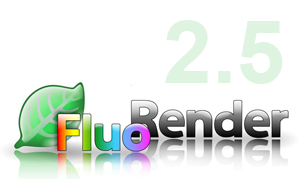 The FluoRender development team is pleased to announce the release of FluoRender 2.5. The new version has a number of new features. For details and downloads see the FluoRender Documentation page.
The FluoRender development team is pleased to announce the release of FluoRender 2.5. The new version has a number of new features. For details and downloads see the FluoRender Documentation page.
ImageVis3D Mobile Goes Nuclear
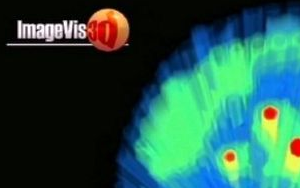 SALT LAKE CITY -- The future of computers is here, and University of Utah scientists keep pushing the envelope. They have developed new imaging programs that turn complex data into brilliant pictures you can view on your iPhone or iPad.
SALT LAKE CITY -- The future of computers is here, and University of Utah scientists keep pushing the envelope. They have developed new imaging programs that turn complex data into brilliant pictures you can view on your iPhone or iPad. ImageVis3D Mobile became available last fall, and new applications are emerging. The latest is an app that simulates a nuclear reaction.
The colorful, clear, 3-D images are created by ImageVis3D. The program takes abstract phenomena and data and turns it into something we can see and better understand. Those pictures help with teaching college students and with collaboration among professionals. They also point to the future of computers for all of us.
Huy Vo Awarded NVIDIA Fellowship for Second Year Running
 SCI graduate student Huy Vo has been awarded an NVIDIA Graduate Fellowship for 2010-2011. This is the second year he has achieved this award which is given to just ten students in the country each year. The NVIDIA Fellowship Program provides funding to Ph.D. students who are conducting research on topics which are expected to lead to major advances in the graphics and digital media industry, and are investigating innovative ways of leveraging the power of graphics hardware. Huy Vo's graduate adviser is SCI faculty member Dr. Cláudio T. Silva.
SCI graduate student Huy Vo has been awarded an NVIDIA Graduate Fellowship for 2010-2011. This is the second year he has achieved this award which is given to just ten students in the country each year. The NVIDIA Fellowship Program provides funding to Ph.D. students who are conducting research on topics which are expected to lead to major advances in the graphics and digital media industry, and are investigating innovative ways of leveraging the power of graphics hardware. Huy Vo's graduate adviser is SCI faculty member Dr. Cláudio T. Silva. For more information about the award, please see the NVIDIA page "NVIDIA Fellowship Program"
Best Paper at Pacific Vis 2010
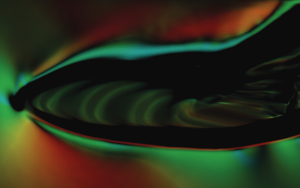 Congratulations to SCI graduate student Carson Brownlee who was awarded "Best Paper" at IEEE Pacific Visualization 2010 for:
Congratulations to SCI graduate student Carson Brownlee who was awarded "Best Paper" at IEEE Pacific Visualization 2010 for:C. Brownlee, V. Pegoraro, S. Shankar, P. McCormick, C. Hansen "Physically-Based Interactive Schlieren Flow Visualization", Proceedings of Pacific Vis 2010.
Lowell Edgar wins 1st Prize in Student Presentation Competition at CMBBE 2010
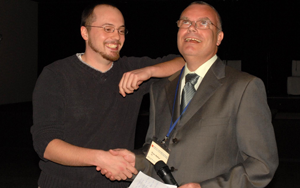 SCI/MRL Lab graduate student Lowell Edgar received 1st prize in the Student Presentation Competition for his research presentation at the Computer Methods in Biomechanics and Biomedical Engineering conference this last week in Valencia, Spain. The award includes 500 Euros.
SCI/MRL Lab graduate student Lowell Edgar received 1st prize in the Student Presentation Competition for his research presentation at the Computer Methods in Biomechanics and Biomedical Engineering conference this last week in Valencia, Spain. The award includes 500 Euros.
MRL Releases FEBio 1.2
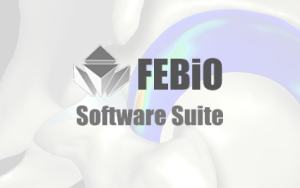 Febio 1.2.0 is now available for download. It includes several new features including:
Febio 1.2.0 is now available for download. It includes several new features including:- faster, multi-threaded linear solvers (Pardiso, SuperLU)
- contact improvements such as improved stability for large compression problems
- a new biphasic contact algorithm to simulate contact between two poroelastic materials
- new material models such as strain-dependant poroelasticity, Holmes-Mow elasticity, ...
As of this version, we will also be distributing our test and examples problems, which illustrate how to setup particular finite element models in FEBio. The testing and examples folders will be located in the installation folder.
Also, a new release of PostView (version 1.3) is now available. The GUI was completely redesigned to provide easier and faster access to the model’s data and properties. A number of improvements were made to the visualization tools as well.
Tom Fletcher and Sarang Joshi paper awarded "most cited" by Signal Processing
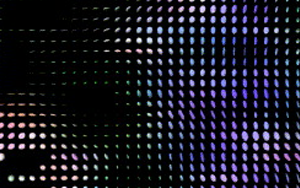 The international journal Signal Processing has announced its award for the 2010 Signal Processing most cited paper goes to Riemannian Geometry for the Statistical Analysis of Diffusion Tensor Data” by Drs. Tom Fletcher and Sarang Joshi. This distinction is based solely on the highest number of cites, excluding self-citations, received by the end of 2009 for all articles published in the journal between the years 2007–2009 as reported by SCOPUS reports (www.scopus.com).
The international journal Signal Processing has announced its award for the 2010 Signal Processing most cited paper goes to Riemannian Geometry for the Statistical Analysis of Diffusion Tensor Data” by Drs. Tom Fletcher and Sarang Joshi. This distinction is based solely on the highest number of cites, excluding self-citations, received by the end of 2009 for all articles published in the journal between the years 2007–2009 as reported by SCOPUS reports (www.scopus.com).P.T. Fletcher, S. Joshi. “Riemannian Geometry for the Statistical Analysis of Diffusion Tensor Data,” In Signal Processing, Vol. 87, No. 2, pp. 250--262. February, 2007.
Announcing VisTrails 1.4
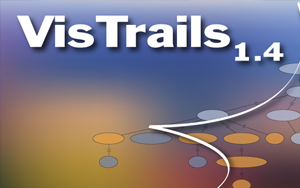 The VisTrails development team is pleased to announce the release of VisTrails 1.4. The new version contains quite a list of improvements and bug fixes. For details, see the release notes.
The VisTrails development team is pleased to announce the release of VisTrails 1.4. The new version contains quite a list of improvements and bug fixes. For details, see the release notes.Download Now
Advanced Climate Change Visualization Presented at UN Climate Change Conference
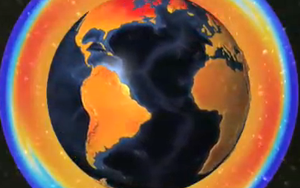 The VACET Center played a key roll in the production of the following visualization of historical and projected climate change data that was presented to participants at the UN Climate Change Conference in Copenhagen in December of 2009. The animated series of temperature anomaly maps was produced by averaging results from 15 of the most advanced climate models in the world resulting in the best projection of climate change to the year 2100. The visualization was created using software integrated with ViSUS data streaming technology developed largely by Valerio Pascucci and techniques developed at the DOE VACET Center.
The VACET Center played a key roll in the production of the following visualization of historical and projected climate change data that was presented to participants at the UN Climate Change Conference in Copenhagen in December of 2009. The animated series of temperature anomaly maps was produced by averaging results from 15 of the most advanced climate models in the world resulting in the best projection of climate change to the year 2100. The visualization was created using software integrated with ViSUS data streaming technology developed largely by Valerio Pascucci and techniques developed at the DOE VACET Center.For more information about ViSUS see: ViSUS: Visualization Streams for Ultimate Scalability.
ParaView Now Includes the VisTrails Provenance Plugin
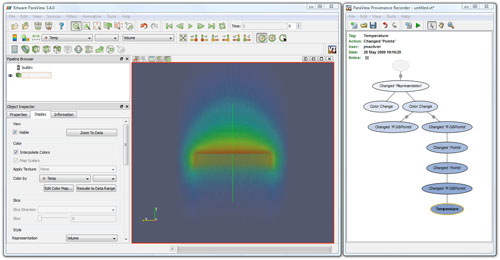 Kitware, Sandia National Laboratories and Los Alamos National Lab have released ParaView 3.6.2. The latest release now includes the VisTrails Provenance Explorer plugin in the Windows and Linux packages. VisTrails is an open-source scientific workflow and provenance management system developed at the SCI Institute that provides support for data exploration and visualization.
Kitware, Sandia National Laboratories and Los Alamos National Lab have released ParaView 3.6.2. The latest release now includes the VisTrails Provenance Explorer plugin in the Windows and Linux packages. VisTrails is an open-source scientific workflow and provenance management system developed at the SCI Institute that provides support for data exploration and visualization. 



